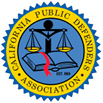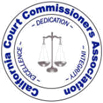Overview:
As a general rule, if a person is convicted of a crime that calls for a sentence involving jail or prison time; that person will be incarcerated in a jail or prison for a specified amount of time. There are some circumstances where a jail or prison sentence can be stayed (meaning that it is put on hold), but those circumstances are usually unique to the facts of a particular case.
In California, non-violent drug offenses are an exception to this general rule. There are two different programs, generally referred to as drug diversion programs, that allow individuals convicted of certain drug-related offenses to enter treatment programs rather than face jail or prison sentences. One is known as Penal Code section 1000 drug diversion, and the other is typically referred to as Proposition 36 drug diversion.
There are a number of requirements for each program, so not all drug offenses are eligible for drug diversion programs. However, if a defendant is eligible for a drug diversion program, they enter it and successfully complete it; their conviction will (or can) be set aside, and the charges against them will be dismissed. On the other hand, if a defendant enters a drug-diversion program but fails to successfully complete it; they can be sent to jail or prison to serve out the sentence imposed on them from the conviction.
There are also what are known as "drug courts" throughout California. These courts are similar to drug diversion programs, except that if a defendant is sent to a drug court, they will not be prosecuted through the normal court system. Instead, they will be sent to a drug court where the goal is to provide treatment rather than to punish.
At first blush it may seem as if each of the three primary avenues for drug diversion programs are essentially the same thing. That is not the case. Each of the three have their own, unique characteristics that tend to make them more or less suitable for a particular defendant, based on the facts and circumstances of each case.
For example, Penal Code section 1000 drug diversion is relatively short in duration with fairly simple requirements and little to no associated costs. In addition, the benefit of this program is that the Defendant need not plead guilty to the offense – it is a pre-plea diversion program. However, that program can be unforgiving; such that often violations of the terms of the program will result in termination of the program and subsequent prosecution for the underlying offense (unless the defendant is then eligible for another program.)
For Proposition 36 drug diversion duration of the program is much longer, the requirements more onerous and the associated costs can be considerable. Also, it is only available for non-violent drug offenses.
Drug court can be viewed as a hybrid approach between Penal Code 1000 and Proposition 36 in that it is fairly forgiving in the event of violations, applies to a wide range of non-violent drug offenses, can have a duration that is longer or shorter depending on what the court determines to be necessary and can have associated costs that are significant or close to none at all. In addition, Drug Court is often available for those that commit crimes such as theft or burglary, that are related to gaining money to sustain a drug habit. That said, drug courts are the most comprehensive of the three options, with the ability to construct customs solutions for a given defendant aimed at providing treatment as an alternative to incarceration.
Penal Code Section 1000 Drug Diversion Programs:
Certain drug-related charges are eligible for diversion after a criminal charge has been filed against a defendant. Eligible charges are generally for non-violent, drug use or possession for personal use charges. Charges related to the sale and distribution of illegal drugs (or legal drugs, such as prescription medication, sold or distributed illegally) are usually ineligible for diversion. In addition, cultivation of marijuana in a quantity consistent with sales, is not eligible for diversion.
There are a number of other requirements for a defendant to be eligible for a drug diversion program as an alternative to traditional prosecution.
- The defendant does not have a drug-related conviction in the preceding 5 years, other than drug-related charges that are eligible for drug diversion programs;
- The charge does not involve a threat of violence or actual violence;
- No evidence of a "contemporaneous violation" involving narcotics or dangerous, restricted drugs, other than violations that are eligible for drug diversion (e.g., a quantity of drugs that suggests an intent to distribute or sell, or the presence of paraphernalia that suggests an intent to distribute or sell); and
- No prior felony convictions (for any type of crime) in the 5 years preceding the drug charge eligible for diversion.
If a prosecutor determines that a defendant meets all the criteria for drug diversion, then they will inform the court of that fact, and the court will order a drug diversion program at the defendant's arraignment. At the arraignment, the defendant will be required to waive the right to a jury trial and waive time for the prosecution of the offense, and the judge will place the defendant on diversion for a period up to 18 months to allow the defendant to complete the requirements of the program. The defendant will not be required to plead guilty, as was the requirement up until a change in the law in 2018. A defendant will then be required to attend an approved and certified drug diversion program in the county where the charges were filed. These programs typically are of some cost to the defendant.
For the following 5 to 6 months, the defendant will be required to attend substance abuse counseling provided by the drug diversion program, and will be required to submit to drug testing at random intervals. After completing substance abuse counseling, and assuming that the defendant did not test positive on any drug testing; they will be placed on unsupervised diversion for the next year. So long as the defendant is not charged with any other crime during that period, they will have successfully completed the drug diversion program. At that time, the court will dismiss the original drug-related charge, and it will not appear on the defendant's criminal record as a conviction.
If a defendant fails to successfully complete the drug diversion program (e.g., they commit another crime or fail a random drug test) then they will lose eligibility for the program and they will be subject to prosecution for the underlying crime. As indicated above, the defendant will not have the right to a jury trial, but has the right to a trial in front of a judge. If convicted, a sentence will be imposed, which can and often will involve jail time. However, even if a defendant fails to comply with Penal Code section 1000 drug diversion, under certain circumstances, they may still be eligible for Proposition 36 drug diversion.
Proposition 36 Programs:
Proposition 36 drug diversion is somewhat similar to Penal Code section 1000 drug diversion, but there are some significant differences. Basically, the requirements for completion of Proposition 36 drug diversion are more stringent than those of P.C. 1000 drug diversion.
The requirements and conditions for Proposition 36 drug diversion are established by Penal Code section 1210.1. Eligibility for this drug diversion program is somewhat different than Penal Code section 1000 drug diversion. The eligibility requirements are:
- The drug-related charge must be for a non-violent, drug possession charge;
- No violent or serious felony convictions within the preceding 5 years;
- No contemporaneous (e., charged simultaneously with the drug possession charge) felony convictions or misdemeanor convictions for crimes not related to drug possession;
- The defendant was not in possession of a deadly weapon at the time the non-violent drug possession charge arose;
- The defendant does not refuse substance abuse treatment; and
- The defendant does not have two prior, non-violent drug possession charges for which they participated in (Proposition 36) drug diversion, if the judge determines that the defendant is "unamenable" to drug treatment.
Under Proposition 36, a defendant is required to plead guilty. The court then imposes a sentence that includes probation, but no jail or prison time. The period of probation will generally be for at least 3 years.
During their probation, a defendant will be required to attend substance abuse counseling and submit to drug testing at random intervals. This will continue until the period of probation is completed. Depending on the particular circumstances of a particular defendant, the requirements for completing probation may be more severe. For instance, a defendant who is determined to suffer from drug addiction may be required to enter a residential treatment facility, or employ a detox service such as a methodone clinic.
There are also a number of other conditions that may be applied to the probation, such as:
- community service;
- family counseling;
- literacy courses; and/or
- vocational training.
Under Penal Code section 1000 drug diversion, if you violate the terms of probation, you will typically be removed from the program and you may face the full measure of penalties from the underlying crime. Proposition 36 drug diversion is different in that a probation violation, or even two, may not prevent you from continuing to participate in the program.
For purposes of Proposition 36 drug diversion there are two different classes of probation violations. The first is in regards to non-violent, drug possession offenses; and the other is in regards to all other crimes and probation violations that do not relate to drug possession.
If a defendant commits a probation violation that relates to non-violent drug possession, then the court will hold a hearing where it will determine whether or not to revoke the probation. These types of probation violations include things such as:
- committing a further, non-violent offense for drug possession;
- committing a non-possession, drug-related misdemeanor;
- failing a drug test; or
- violating any other condition of probation.
If the court determines that the defendant poses a danger to society, then probation must be revoked. Otherwise, the decision will be made within the discretion of the court. The court, if it decides not to revoke probation, may impose additional requirements such as submission to a detox program, a more onerous counseling and testing regimen or a short period of jail time.
This same procedure can be applied to a defendant upon a second probation violation, except that a court will revoke probation if it determines that the defendant is not amenable to treatment or that they poses a danger to society. If a defendant on probation commits a third probation violation, the court will revoke probation unless it specifically finds that the defendant does not pose a danger to society, and that they are amenable to treatment.
For probation violations involving all other crimes and probation violations, the court may incarcerate the defendant for up to 30 days while it makes a decision as to whether or not to allow the defendant to continue with probation. If it decides to allow the defendant to continue probation, then it may impose additional conditions or otherwise modify the terms of probation as it deems prudent. If the court decides that the defendant may not continue with probation, then the defendant will be subject to the penalties normally imposed for the crime for which they were convicted. Of course, if the probation violation was the commission of another crime, the defendant will face the penalties for that crime, including jail or prison time; regardless of how the court decides to proceed with the drug diversion program.
If a defendant successfully completes a Proposition 36 drug diversion program, their probation will have run its course, and they will no longer be subject to any of the terms and conditions of probation. In addition, the defendant will have the opportunity to petition the court to set aside the conviction. If the court does see that the defendant successfully completed the program, they are required to set aside the conviction so that it will no longer appear on the defendant's criminal record.
Both P.C. 1000 drug diversion and Proposition 36 programs may require the defendant to pay fees for the counseling and treatment.
Drug Courts:
Drug courts are a method of providing drug diversion for non-violent drug offenders that is entirely separate from the traditional court system. They were first introduced in the 1990s, and more than 200 of them currently operate throughout the state of California.
Drug courts have a wider mandate than do traditional courts when it comes to providing drug treatment programs. Traditional courts only deal with those accused of a crime, and offer drug diversion as an alternative to incarceration. Drug courts, on the other hand, operate within the criminal law framework, as well as within certain limited areas of civil courts. In particular, drug courts are used to provide treatment to parents in Dependency cases so as to allow them to obtain or retain child custody.
While drug courts are indeed real courts, with real judges, prosecutors and defense attorneys; they are much more loosely structured and informal. This allows them more flexibility to achieve their goal, which is treatment for drug use and addiction as opposed to punishment for violation of the law. In this way, drug courts are more about helping the individuals who come before the court, and not just serving the public at large.
One main advantage of drug courts is someone can be eligible when charged with a range of non-violent drug-related crimes, not just drug possession offenses. Similarly, drug courts will not handle drug-related crimes that involve distribution or sales, unless a skilled defense attorney is able to work out a plea bargain that reduces charges to simple possession. Also, like Proposition 36 drug diversion, drug courts rate by a defendant entering a guilty or no-contest plea as a condition of receiving substance abuse treatment in lieu of incarceration. This will result in what is commonly referred to as a "diversion order," which is essentially a plea bargain. Similar to both Penal Code section 1000 drug diversion and Proposition 36, successful completion of drug court programs will typically result in the court setting aside the conviction so that it will no longer appear on the defendant's criminal record.
Drug courts also share two important similarities with Proposition 36 drug diversion. Specifically, drug court defendants may be responsible for some or all of the costs associated with the treatment programs in which they are ordered to participate, provided that they are reasonably able to bear those costs. Also, drug court has a degree of flexibility which allows them to keep a defendant in drug court and on a treatment program, even if they violate the terms of their diversion order. In reality, it is usually up to the discretion and judgment of the court as to how to deal with a defendant who violates the terms of diversion order, but there are a number of suggested sanctions that the court can employ. Those are:
- demoting a defendant to an earlier phase of treatment;
- increasing treatment requirements or frequency of treatment;
- increasing the frequency of drug testing;
- increasing supervision requirements;
- incarceration, on a graduated basis, when a defendant fails to comply with a diversion order either by using drugs or failing to participate in treatment; and
- reinstating criminal proceedings as a last resort.
Drug courts also go beyond other drug diversion programs in that drug court judges have the discretion to incentivize defendants as a means of encouraging them to follow through with the diversion order and receive the help they need. Again, the drug court judge has wide discretion in determining what incentives a defendant receives, and to what degree; but there are a number of suggested incentives. Those are:
- encouragement;
- advancing a defendant to the next phase of treatment;
- reducing the costs that a defendant must pay for drug treatment programs;
- reducing the number or frequency of required court appearances, program length or the term of a diversion order; and
- whatever other incentives that the court deems appropriate or necessary.
While drug courts have wide latitude to continue to work with defendants, pursuant to a diversion order; there are still circumstances where the court will generally terminate a diversion order and subject the defendant to traditional prosecution for the underlying crime. Drug court judges have discretion to make that determination based on the specific facts and circumstances of a particular case, but in general a diversion order will be terminated, and the defendant prosecuted if:
- the defendant does not satisfactorily perform in the treatment program;
- the defendant does not appear to have benefited from rehabilitation, treatment or education;
- the defendant is later convicted of a misdemeanor that shows they have a propensity for violence; or
- the defendant engages in other criminal conduct (e.g., the commission of a felony) that demonstrates that further treatment is not a suitable remedy.
How We can Help:
I David Foos, have been practicing criminal defense for over 35 years. I have represented people on hundreds of drug related offenses and have been extremely successful in obtaining drug diversion programs for my clients. I have served as a Judicial Officer of the Sacramento Superior Court for 16 years, and often was the Judicial Officer that presided over drug diversion cases. I will zealously represent you and vigorously advocate for your case. I have a proven track record of positive results for my clients. When you hire me, I will bring all my experience and skill to bear in representing you. Please call me for a no-fee initial consult at 916-779-3500, or reach me on the web at contact@foosgavinlaw.com.















